
Clinical Success Factors for All-Ceramic Treatments
For the past two decades, the Ceramic Success Analysis (CSA) from AG Keramik has been used to document and analyze data on all-ceramic treatments. As part of this multicenter, internet-based study, data sets from more than 12,000 treatments across 150 practices have now been statistically evaluated. In addition to the findings, the data pool also includes the clinical procedures, materials used and processing techniques. The observation period was up to 20 years. In the following interview, the chairman of AG Keramik, Dr. Bernd Reiss, explains what findings this long period of observation indicates concerning potential clinical success and risk factors.
DV: How is clinical data collected and evaluated during the Ceramic Success Analysis?
Dr. Bernd Reiss: Participating dentists in the CSA entered their data on the internet platform www.csa-online.net. A separate database was developed there for each participant, allowing default settings to be created. The evaluation can be accessed online at any time; a specific evaluation with comments and individual suggestions takes place once a year.
DV: What all-ceramic treatment types indicated the best clinical success rates in the multicenter CSA study?
Dr. Bernd Reiss: In general, all of the all-ceramic restorations show good results. However, inlays, onlays and partial crowns have higher success rates than the conventional full crown.
DV: What role does the level of invasiveness play in achieving a positive long-term prognosis for all-ceramic restorations?
Dr. Bernd Reiss: Surprisingly, invasiveness has no effect on long-term prognosis. In any case, the prognosis for major restorations that sometimes involve the replacement of several cusps is as good as one to three-surface inlays. However, a defect-oriented approach is recommended both for replacing insufficient plastic fillings, as well as for treating extensive defects with missing or undermined cusps. That still leaves an option to proceed from a partial restoration to a full crown in the case of a failure. The reverse option is not possible.
DV: What all-ceramic dental prostheses have thus far proven particularly effective in practical use?
Dr. Bernd Reiss: VITABLOCS feldspar ceramic is a classic among CAD/CAM all-ceramic solutions and shows very good results. Interestingly, this material shows similar results to high-strength materials, even with crown restorations. This may also be due to the meticulous observance of the minimum wall thickness by the dentists who choose this material.
DV: What indications and types of material processing and fixation show an increase in the likelihood of complications?
Dr. Bernd Reiss: The biggest risk group we were able to identify is primarily avital teeth. This pertains to both crowns, as well as partial restorations. Patients need to be informed about this increased risk. Implant treatments, on the other hand, have better than average rates. A strict, fully adhesive fixation shows better results than a self-adhesive or classic cementation technique, though the differences are not as great as I would have expected. The same applies to the positive effects of using a rubber dam. Omitting silane has a negative effect on the prognosis of ceramic treatments.
DV: How much of an influence does the practitioner have on the long-term clinical stability of a treatment?
Dr. Bernd Reiss: Practitioners have a major impact on the results. It is one of the main reasons for the success and importance of the CSA. It is not only important to show dentists the strong points of their treatments, but also to identify the risks that could lead to increased failure rates. If there are major failures, practitioners can use the CSA to analyze their approach and choice of materials, and to achieve improvements in clinical success based on their findings.
DV: What treatment steps should dentists pay particular attention to in order to achieve good long-term results for all-ceramic restorations?
Dr. Bernd Reiss: Defect-oriented work procedures and compliance with manufacturer recommendations are certainly two very important pillars for long-term clinical success.
Report 11/18
Dr. Bernd Reiss
Malsch, Germany
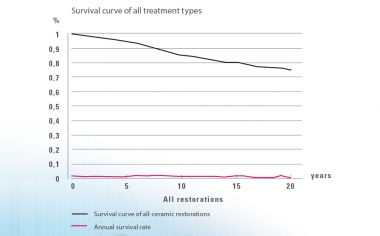
Fig. 1: Kaplan-Meier Estimator: Annual failure rates remained at a consistently low level of 0.5-0.9 % per year over a 20-year observation period; N = 9542 restorations.
Source: Dr. Bernd Reiss, CSA database, report: 11/18.
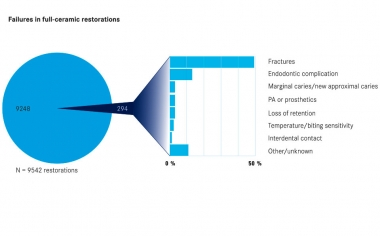
Fig. 2: Data analysis of failures by causes: The most common failures are fractures and endodontic complications.
Source: Dr. Bernd Reiss, CSA database, report 11/18.
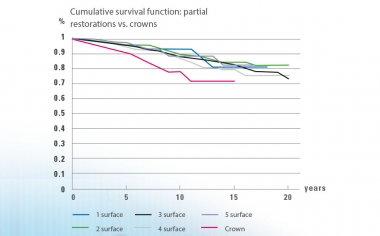
Fig. 3: Kaplan-Meier Estimator: The analysis of the survival rate of one to five-surface partial restorations, as compared to crowns, shows a lower survival rate for crowns.
Source: Dr. Bernd Reiss, CSA database, report 11/18.
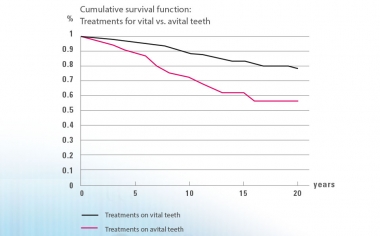
Fig. 4: Kaplan-Meier Estimator: Significantly lower survival rate for treatments on avital teeth as compared to vital teeth.
Source: Dr. Bernd Reiss, CSA database, report 11/18.
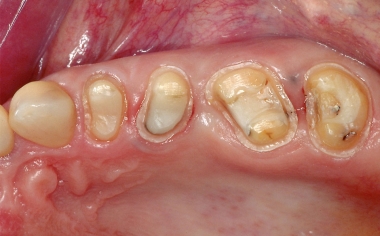
Fig. 5: Initial situation/preparation.
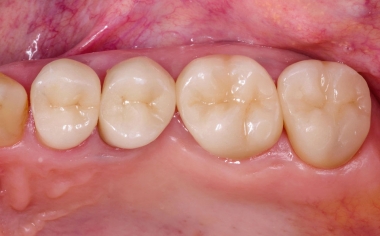
Fig. 6: Baseline evaluation; VITABLOCS all-ceramic crowns (24–27).
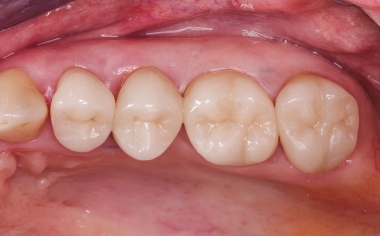
Fig. 7: VITABLOCS crowns during a follow-up appointment after 17 years.
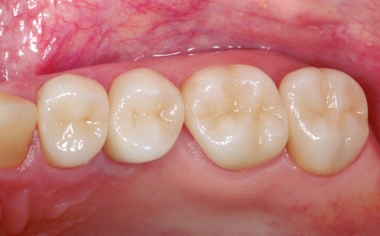
Fig. 8: VITABLOCS crowns follow-up appointment after 20.5 years.
Photo source: PD Dr. Andreas Bindl, Zürich, Switzerland.